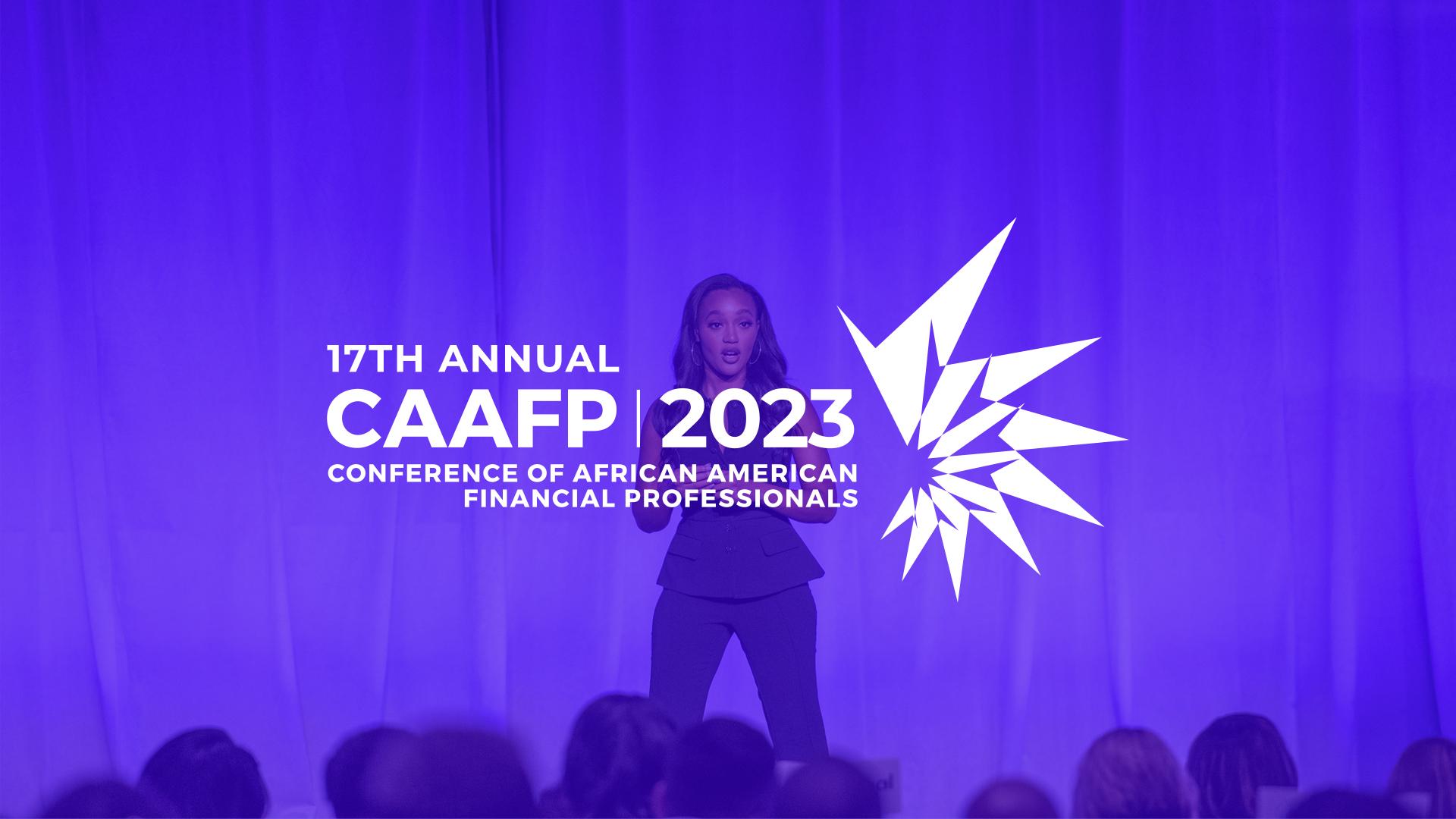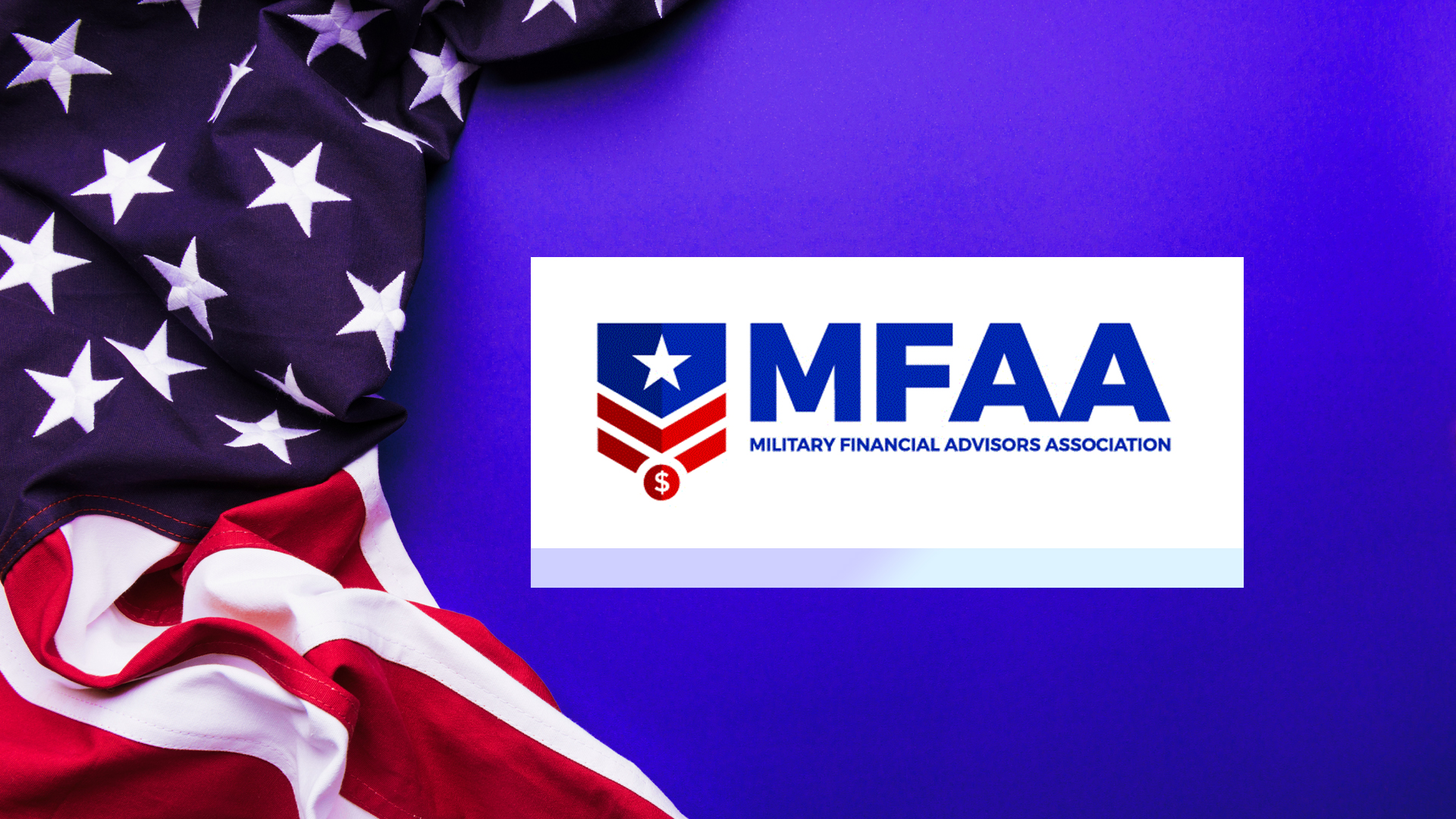Ethics In Financial Services Insights
Understanding Differentiating Reasons for Trust is Key to Winning Consumers

Humans hold complicated beliefs and emotions. This is evident in consumer trust in financial services. Our inaugural Trust in Financial Services Study brought to bear contradictory dynamics of trust in the financial industry. For instance, consumers may appreciate financial companies’ alignment with their belief in environmentalism, yet express skepticism when it comes to trusting financial companies to not pilfer their money.
Domarina Oshana, PhD, Director of Research and Operations of the American College Cary M. Maguire Center for Ethics in Financial Services shares additional insights in this article in American Banker on the dualities of trust and actions financial companies can take to increase trustworthiness with communities of color.
To win consumer trust, it’s important for financial companies to understand consumers’ different reasons for high or low trust, which vary depending on their community. Such insights can help close gaps in trust and build financial companies’ trustworthiness.
Ethics In Financial Services Insights
Impact of Artificial Intelligence (AI) in Financial Advisory Industry

Participants in the program gained practical guidance on how AI can be used to improve client services, how predictive analytic technology can advance client interactions with advisors, and the U.S. Securities and Exchange Commission (SEC)’s proposed rule on predictive data analytics.
Our panelists explored the transformative impact of artificial intelligence (AI) on the financial advisory industry. In an era marked by technological advancement, financial advisors are presented with both unprecedented opportunities and notable challenges. Financial technology is increasingly being used to help mediate the advisory relationship, providing seamless ways to match with financial advisors, communicate more effectively, and increase client engagement opportunities.
As AI tools have become increasingly available, integrating these techniques into advisory relationships has been on the rise within broker-dealers and registered investment advisors. The SEC proposed a new rule in August 2023 that highlights where regulators see an increased risk of conflicts of interest that may not be in the best interest of clients. The proposed rule outlines the SEC’s potential approach to addressing these risks when predictive data analytics are used in client interactions (for proposed rule, click here).
The panelists also explored the following topics:
- Use cases for how AI can enable advisors to make informed decisions and provide timely advice and services to clients.
- How predictive analytic technology and AI-enabled services can provide tools to clients to self-manage their own financial decisions and strategies.
- Governance practices that companies can consider to manage potential negative impact to clients.
- The SEC’s proposed rule on predictive data analytics and the regulatory perspective on the risks created by these technologies.
- The potential implications of AI on advisor/client interactions, and the industry.
Diversity, Equity & Inclusion Insights
Career Pathways in Financial Services: An Introduction for Black Americans

Career Pathways in Financial Services: An Introduction for Black Americans is a practical guide to career pathways in financial services. It explores the challenges and opportunities facing potential Black financial services professionals, outlines the career paths available to you, and helps you chart your personal path forward.
Challenges and Opportunities
Black Americans are underrepresented in the financial services industry. While Black Americans make up almost 13% of the US population, they make up only 5% of financial professionals.1 This underrepresentation is mirrored in the wealth gap between Black and White Americans —the median Black family’s wealth was just $24,100 in 2019, about one-eighth of the $188,200 median wealth of White families.2
These statistics point to a serious schism in the relationship between Black Americans and the financial service industry. Yet the industry offers significant opportunities for potential Black professionals. Many financial services firms have a strong sense of mission and a career in financial services can be rewarding for those who want to serve their communities. A career in finance can offer generous pay - financial services jobs pay a median wage of close to $40 an hour compared to less than $23 an hour for all jobs on average.3
Financial Services
Industry Overview
For those with the right skills, there are a range of opportunities in the various sectors of the financial services industry:
- Banking
- Insurance
- Financial Planning
- Wealth and Investment Management
- FinTech
- Brokerage
Core Skills
Financial professionals need a range of skills, including:
- Skilled in leadership and able to demonstrate accountability.
- Comfortable with numbers.
- Good at communication.
- Organized.
- Proficient at problem-solving.
- Mature and have a high degree of emotional intelligence.
- Proficient at time management.
- Good at teamwork and at working and interacting with different types of people.
Your Career Path
A career in financial services can be professionally, financially, and emotionally fulfilling. Your career will generally move through three phases.
Phase 1: Learning
- Finding your first job.
- Developing industry knowledge and practical skills.
- Building relationships within your industry/firm.
- Learning industry norms.
- Building customer contacts.
- Obtaining any necessary licenses.
Phase 2: Building
- Developing specialized skills.
- Building your network inside and outside your firm.
- Pursuing new career opportunities/promotions.
- Becoming active in industry groups and professional associations.
Phase 3: Leading
- Understanding how to manage a business/department.
- Developing leadership skills.
- Staying current on industry trends and developments.
Next Steps
- Reach out to The American College of Financial Services’ Center for Economic Empowerment and Equality® to access cutting-edge research into the financial services industry, guidance on scholarships that can support your financial services education journey, and opportunities to connect with Black financial services professionals.
- Read financial media and watching financial news, as well as following financial professionals on social media.
- Reach out to any contacts you have who work in finance or connect with financial professionals through your LinkedIn network.
- Consider your current education and whether you may benefit from additional certifications or designations.
Diversity, Equity & Inclusion Insights
VetCTAP Aims to Increase Veteran Employment Rate

The VetCTAP program concept grew out of the personal experience of Sandra Fichter (former US Army Officer), who is a Human Resources (HR) professional. In her HR role, Sandra reviewed resumes from transitioning veterans that did not accurately reflect all of their skills. Sandra could predict that they would not be selected for jobs they qualified for because they did not effectively communicate their strengths and skills. This realization led to the birth of the VetCTAP workshop series.
Sandra recruited senior learning and development expert, Janis Whitaker and other HR professionals to create a job search workshop series. The program was built around three key elements: one-on-one coaching, utilizing HR professionals as facilitators and coaches, and reaching military members before they leave the service, allowing for a smooth and successful career change.
The VetCTAP workshop series (formerly CTAP) began in 2012 successfully assisting military, veterans, and spouses through their career transition. The program has sustained a 90% success rate of graduates obtaining the career of their choice. VetCTAP’s success is not possible without HR and business professionals who volunteer to teach and coach, and donors who share in the passion of supporting veterans and spouses in transition, and helping those veterans find employment in the career of their choice, where they can comfortably provide for themselves and their families.
Disclaimer: The information provided in this article is intended for general informational purposes only. It should not be considered as financial, legal, investment or other professional advice. Readers should consult with the relevant professionals for specific advice related to their situation.
We are not affiliated, associated, authorized, endorsed by, compensated or in any way officially connected with any other company, agency, or government agency in this article. All product, service and company names are trademarks™ or registered® trademarks of their respective holders. Use of them does not imply any affiliation with or endorsement by them.
Before making any decisions based on the information contained in this article, you are strongly advised to refer to alternative, independent sources of information to substantiate the basis for your decision. It is your sole responsibility to satisfy yourself prior to using the information in any way and to seek appropriate advice before taking or refraining from taking any action in reliance on any information contained in this article.
Honoring our Heroes: Veterans Day, November 11, 2023

Veterans Day is a solemn reminder of the sacrifices made by these heroes to protect our freedom, uphold our values, and preserve our way of life.
These veterans have faced adversity on the front lines, away from their homes and loved ones, often in the harshest conditions. They have demonstrated courage, resilience, and unwavering dedication. Their service transcends political divides, uniting us in our collective gratitude for their sacrifice.
Veterans Day is a day of remembrance, reflection, and appreciation. It is an opportunity to express our profound thanks to those who have worn the uniform, to recognize the challenges they’ve faced during and after their service, and to provide our support as they transition back into civilian life.
As a nation, we must not only celebrate Veterans Day with parades and ceremonies, but also strive to make a lasting impact by supporting our veterans through initiatives that offer education, employment, and healthcare. These heroes deserve nothing less for their immense contributions to our country.
Let us stand together and salute the veterans who have given so much for us, on this Veterans Day and every day. Their sacrifices remind us that freedom is not free, and our gratitude should be boundless.
Diversity, Equity & Inclusion Insights
Military Spouse Grateful for Center Scholarship

To The American College of Financial Services Center for Military and Veterans Affairs
I wanted to take a moment to express my sincere gratitude for your generous support through the Center for Military and Veterans Affairs scholarship program. I am honored to be a recipient of this scholarship, which will enable me to pursue new training in wealth management as a military spouse.
Your invaluable contribution has provided me with an extraordinary opportunity to enhance my knowledge and skills in the field of wealth management. I have always been passionate about financial literacy and enabling individuals to achieve financial stability and independence. This scholarship will allow me to transform this passion into a reality, and I am committed to making the most of this opportunity … using my newfound knowledge to empower military families.
I want to express my sincere appreciation for your recognition of the unique challenges faced by military spouses and your commitment to their personal and professional growth. By investing in my education and training, you are not only supporting me as an individual but also making a positive impact on the entire military community.
Thank you once again for your invaluable support which has not only lightened the financial burden but also reaffirmed my commitment to making a positive impact on the lives of military families. I will always be grateful for the opportunity you have given me and will strive to pay it forward by helping others in the future.
With heartfelt appreciation,
Sheree Couts
Diversity, Equity & Inclusion Insights
CAAFP 2023 Focuses on Reclaiming Black Wealth

The three-day event entered its 17th year during a time of great changes. Since the nation’s renewed racial awakening in 2020, progress has been made on many fronts in the mission to bring greater equality and opportunity for African Americans to public and business spheres. However, the recent Supreme Court decision regarding affirmative action has sparked new conversations about the future of diversity, equity, and inclusion.
Given this state of affairs, speakers at CAAFP 2023 focused on renewing attendees’ passion for pursuing change in their organizations and other environments and increasing the power of Black communities through cooperation and commitment. Through inspiring workshops, coaching sessions, networking opportunities, keynote addresses, and more, the conference once again served as a vehicle to bring people of all personal and professional backgrounds together for an exciting and empowering experience.
Finding Balance in Trying Times
The CAAFP’s general session opened with words of welcome from College figures including Dr. Pamela Jolly and President and CEO George Nichols III, CAP®. Dr. Jolly, a leader affiliated with the American College Center for Economic Empowerment and Equality, told attendees that while protests and demonstrations can raise awareness about issues of diversity and inclusion, what’s really needed is actionable plans to back up the desire for change.
“There was a moment. Now, what we need is a movement,”
Dr. Pamela Jolly
“I want us to be bold, but I don’t want us to be spontaneous. I want us to be strategic. Reclaiming Black wealth involves reclaiming our memories, our history, our sweat equity, our communities, and our models of wealth.”
Dr. Jolly was followed by Eszylfie Taylor, President of Taylor Insurance and Financial Services, who discussed the interconnectedness of mind, body, and money. A financial and personal wellness guru, Taylor emphasized the need for balance in all elements of life, as well as for ongoing transformative action.
“Your diet isn’t only what you eat; it’s what you watch, what you listen to, and who you surround yourself with,” he said. “I don’t believe in winning and losing: I believe in winning and learning. And you can’t get upset about results from work you didn’t do.”
Planning for Success
Day 2 of the conference opened with an address from Lauren Simmons, who at 23 years old became the youngest woman to be a full-time trader in the New York Stock Exchange. Simmons is now a personal finance expert for women and youth, and she detailed how her own relationship with money influenced her career journey.
“Black wealth is a power beyond imagination, but we’re running a marathon, not a sprint,” she said. “Being wealthy is about having a long-term plan. If we continue to think in a short-term mentality, we will continue to repeat history over and over again.”
Simmons also spoke about many pioneers of Black wealth, including Jeremiah Hamilton, who was the first Black man on Wall Street. Having invested in the construction of the country’s modern railroad system, Hamilton died with the equivalent of $65 million in assets – and yet very few people know his story, much like the success and destruction of the “Black Wall Street” community in Tulsa, Oklahoma.
“There is power in entrepreneurship. Education alone is not going to close the wealth gap,” Simmons said. “We need to stop people from erasing the power we’ve historically had in this country – and that can be ours again.”
In between keynote sessions and workshops on subjects from crypto assets and financial psychology to professional development and other topics, attendees also had the chance to network to form new connections of fellowship and to shop various Black-owned businesses in the Chicago area. The evening was capped off by the annual CAAFP White Party, where speakers, attendees, and other professional guests and staff came together to celebrate the transformative nature of the conference and its legacy of bringing people of all different backgrounds together in solidarity.
A Powerful Call to Continued Action
After more workshops and networking time, the final day of the conference concluded with a panel discussion of Black business leaders, including President Nichols, on how they could combine their efforts to create lasting change.
As leader of The College, President Nichols continued to drive home the message that Black communities, and all communities, are “Stronger Together.”
“You can’t advance what we are aiming to unless you perform and do the work,” he said. “You need to reclaim your own wealth so you can help others reclaim theirs.”
With the need for concerted and connected action at the forefront, attendees of CAAFP 2023 left energized and inspired to bring the lessons they learned back to their places of business and communities. The College looks forward to CAAFP 2024, coming August 12-14, 2024, in Atlanta, Georgia!
Smart Social Security Strategies for Women

More women are working than ever before, but their average benefits are lower than those for men because women typically earn less over their lifetime. In addition, falling marriage rates mean fewer women are in a position to claim spouse’s and survivor benefits.
Here are some important points for women to consider when planning to apply for Social Security benefits:
Claiming Benefits
Benefits can be reduced by up to 30% if you claim as soon as you are eligible, before your full retirement age. If you have other income sources you can use after retirement, such as a 401(k) or IRA, you can delay claiming your Social Security benefits. This delay will result in increased monthly benefits when you do begin receiving them. The increased monthly amount can have a positive impact on your financial security because you will receive a greater amount for the rest of your life.
Your Health
Delaying your claiming age makes sense if you are in good health. If you are in poor health, it may make sense to claim earlier.
Ethics In Financial Services Insights
The Fork in the Road for Social Enterprises

Published: Brown, J. A., Forster, W. R., & Wicks, A. C. The Fork in the Road for Social Enterprises: Leveraging Moral Imagination for Long-Term Stakeholder Support. Entrepreneurship Theory and Practice, DOI 10422587211041485 (in 2021); in print ET&P, 2023, 47(1), 91-112 (2023).
This manuscript was accepted for a special issue on stakeholder theory and entrepreneurship. It went online September 20, 2021, and in print in 2022/23. Entrepreneurship Theory and Practice (ET&P) is considered a top, AJG-4 rated journal,1 applied to journals that “publish the most original and best-executed research.”2 It has a five-year impact factor of 14.105. The paper has been downloaded over 1000 times as of May 2023. I am lead and corresponding author on the article. In 2022, it won the Best Published Paper Award at the annual International Association of Business & Society (IABS) conference—an international conference and institution dedicated to research and teaching about the relationships between business, government and society.
This article was motivated by reading about the popular philanthropic shoe company, the TOMS company. Founder Blake Mycoskie introduced a “one-for-one” business model, where he promised that for every purchase of shoes, the company would give away a pair of shoes to some needy child or person. The initial response from customers was highly supportive, but less than five years from its formation, the company found itself subject to a firestorm of critique from disillusioned observers who accused the company of being more focused on getting consumer dollars than making a tangible impact through their social mission. The cause of the criticism was associated mainly with TOMS’s failure to create opportunities for needy communities to better themselves. TOMS was accused of making people in developing countries dependent on the goodwill of others, in addition to preventing local markets from thriving.
Hence, my co-authors and I decided to unpack the issues that left TOMS (at least temporarily) on the bad side of its stakeholders. We were left wondering, what are the key factors for social enterprises (SEs) like TOMS that enable a company to sustain the support of their stakeholders beyond their nascent stage? Put another way, how can SEs capture positive social judgments and avoid a loss of moral legitimacy and stakeholder support, as happened in the TOMS case? And finally, what aspects of stakeholder theory are most relevant to social entrepreneurs in their quest to create and sustain long-term value creation?
To answer these questions, we develop a conceptual process model and testable propositions that have both theoretical and practical significance. The model shows that after SEs secure the support of primary stakeholders like financiers, suppliers and customers, they then face a “fork in the road” where they are assessed for social impact. If they continue their focus on primary stakeholders to the exclusion of secondary stakeholders like communities, they risk losing the moral legitimacy of both their primary and secondary stakeholders, which will ultimately cause their failure (i.e. they end up on the “low road”). However, our model shows how social entrepreneurs and their enterprises can leverage their moral imagination---the ability to understand the activities of business from a number of perspectives---to affect the ways their stakeholders envision their legitimacy (i.e. they end up on the “high road”). They can do this: 1) in broadening stakeholder awareness and engagement, 2) in empathizing with secondary stakeholders, and 3) in establishing microsocial norms. Thankfully, TOMS became aware of broader stakeholder concerns and chose to engage with both primary and secondary stakeholders, using moral imagination to regroup and take ‘the high road’. In sum, our manuscript provides a nuanced stakeholder lens that identifies factors critical to the longevity of SE businesses.
I use the TOMs case study and my developed process model in my current graduate classes, in executive education and in my pro bono ethics/stakeholder training for compliance professionals. There is a message for social entrepreneurs in the need to pay attention to secondary stakeholders, and I find that it is received well by leaders across all stages of entrepreneurship.
In sum, this article has been recognized by a highly regarded journal and is beginning to contribute to the advancement and refinement of stakeholder theory and social entrepreneurship.
Military Support Organization of the Month: MFAA

With a motto of “military veterans and spouses serving military and veteran families,” the MFAA’s qualifications and standards exceed those of most financial services organizations—but more importantly, they know the life. You don’t need to explain what SBP (Survivor Benefit Program) and BAH (Basic Housing Allowance) mean to them. They already know.
Andrea Clark, CFP®, AFC®, one of the founders of MFAA, has a special connection to The College. She is a previous scholarship recipient from the American College Center for Military and Veterans Affairs, having been awarded one by The College to pursue the CFP® Certification Education Program around the time her husband retired from the military. Along with several other Center of Military and Veterans Affairs scholars, Andrea went on to found MFAA: a non-profit professional association of independent financial planning experts specializing in financial advice and planning services for military and veteran families.
MFAA realizes the military community has long been overlooked by financial planners, and there is now a greater need than anyone in the industry can possibly satisfy on their own. They believe that only by working together can we all accomplish our objective of providing military and veteran families with the highest quality financial advice.
All MFAA members must meet these standards:
- XY Planning Network member in good standing
- Sign a fiduciary oath to act in the best interests of our clients at all times
- Operate as a fee-only financial advisor, meaning that we don’t collect any kinds of commissions or other earnings for the recommendations we make to clients
- Offer a fee structure other than assets under management
- Have no derogatory marks on our records as financial professionals
- Primary focus on providing comprehensive financial planning, not just investment management
- Prior service as a military member or a military spouse
- Committed to continually furthering our education in order to better serve clients
- Own or work at an independent Registered Investment Advisory (RIA), avoiding the issues that may exist among advisors at large broker-dealers or insurance companies
- Have a positive reputation among local professionals in our industry, as membership in MFAA is by invitation only
- Maintain their status as a CFP® professional or a candidate currently pursuing the designation (members may also maintain additional certifications related to financial planning)
Disclaimer: The information provided in this article is intended for general informational purposes only. It should not be considered as financial, legal, investment or other professional advice. Readers should consult with the relevant professionals for specific advice related to their situation.
We are not affiliated, associated, authorized, endorsed by, compensated or in any way officially connected with any other company, agency, or government agency in this article. All product, service and company names are trademarks™ or registered® trademarks of their respective holders. Use of them does not imply any affiliation with or endorsement by them.
Before making any decisions based on the information contained in this article, you are strongly advised to refer to alternative, independent sources of information to substantiate the basis for your decision. It is your sole responsibility to satisfy yourself prior to using the information in any way and to seek appropriate advice before taking or refraining from taking any action in reliance on any information contained in this article.